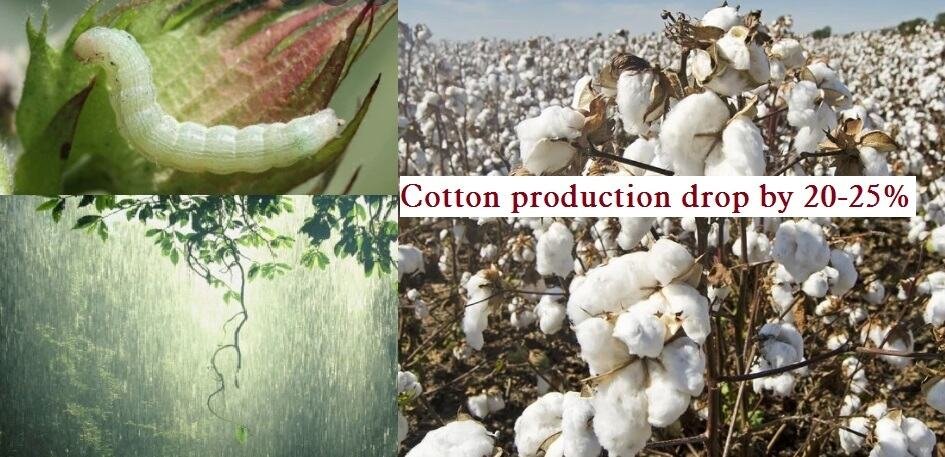Sudden and unexpected rains, poor quality hybrid seeds used in HTBT (herbicide-tolerant biotechnology) cotton seeds, and the presence of pink bollworm in some areas all contributed to a significant drop in yields during the recently completed Kharif season.
Considering the high demand for the fiber crop in both domestic and international markets, thousands of farmers in several mandis are unable to capitalize on a high price situation. Industry experts estimate a 20-25 percent drop in yields and production.
Alos Read: To combat pink bollworm, PJTSAU is developing single-pick cotton variety
‘The heavy rains brought by Cyclone Gulab in Telangana, Andhra Pradesh, Maharashtra, Gujarat, Madhya Pradesh, and Chhattisgarh have harmed the standing cotton crop in many places.’ Excess rainfall in Maharashtra, Gujarat, and Telangana could reduce cotton yields, which are in the flowering stage, according to a Market Intelligence report by Prof. Jayashankar Telangana State Agricultural University (PJTSAU).
Late rains due to La Nina and pink bollworm incidence, according to M Prabhakara Rao, President of the National Seed Association of India, are the main reasons for poor cotton yields and production this year.
‘Use of poor quality seeds marketed as 4G (fourth-generation Bt seeds) in Gujarat, Madhya Pradesh, and Maharashtra is also a contributing factor to the drop in yields.’
Ram Kaundinya, president of the Federation of Seed Industry of India and the Alliance for Agri Innovation, agrees.
‘Cotton yields in the Kharif season are expected to be 20% lower, owing to unusually heavy rains in the major cotton growing areas of West and South India from September to November 2021,’ Ram Kaundinya said.
‘The occurrence of pink bollworm attack has resulted in some yield loss. The spread of illegal HT BT, specifically 3G and 4G, is a factor in the drop in yields,’ he explained.
In low-quality seeds, there is HTBT
He claimed that the low genetic and physical quality of the seed used in illegal supplies had a negative impact on yields. ‘This is a serious issue because it affects more than 20% of the cotton area in the country. The HTBT area in the South and West accounts for approximately 30% of the total cotton area there,’ he said.
‘A comprehensive strategy is required to halt the spread of illegal HTBT. The government must crack down hard on the production and distribution of unauthorized HTBT seeds,’ he said.
If it is not stopped, there is a risk that it will spread further in the next three years, reducing crop yields before legally approved seed enters the market, he believes.
Also Read: ‘Gulabi’ campaign to combat pink bollworm by Syngenta launched
According to a top executive of a cottonseed company, the distribution network of HTBT cottonseed is capable of deceiving government agencies. ‘They are concealing the illegal seed by packaging the material in such a way that it resembles packets of approved brands,’ he said, requesting anonymity.
Farmers in Telangana reported yield losses of up to 50% in some areas. Yields fell to 4-5 quintals per acre, down from 10-12 quintals in a good year.


















Add Comment